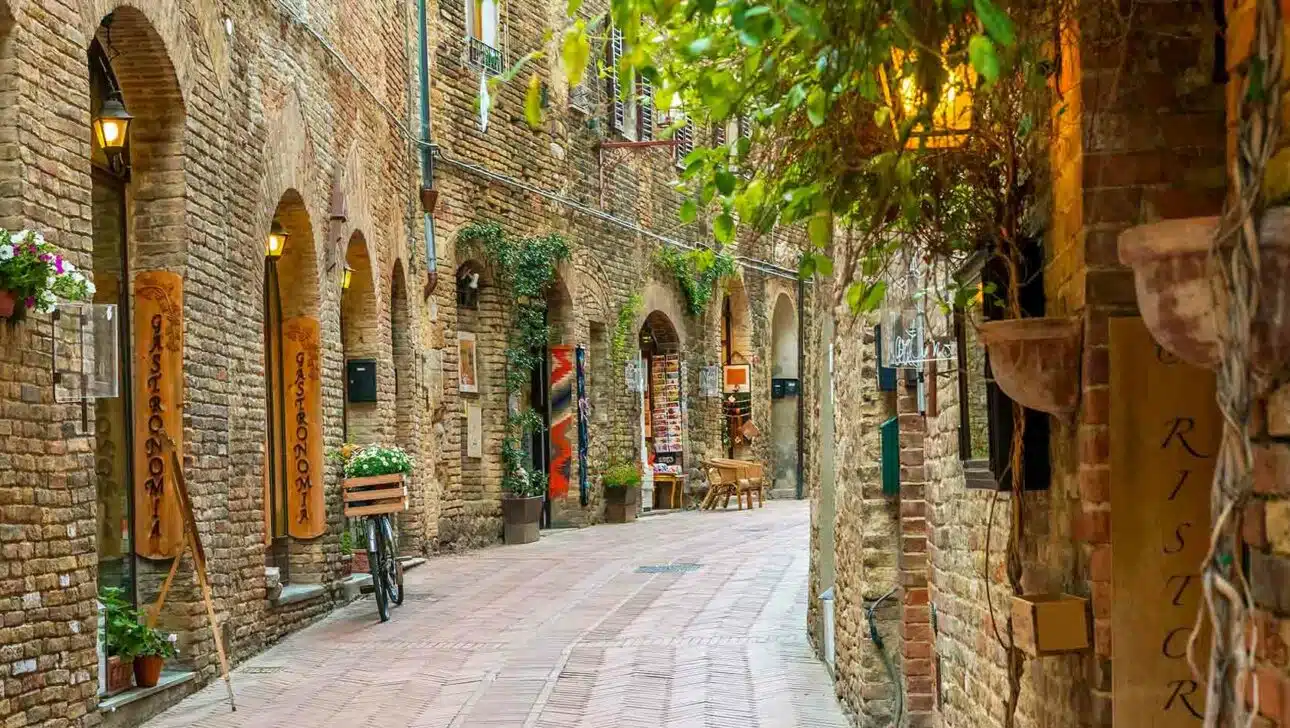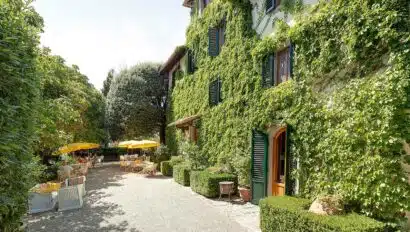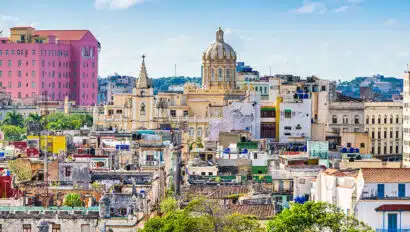It’s hard to imagine that quaint San Gimignano boasted an impressive 72 skyscrapers before the Renaissance age. But way back in the 1300s, well-to-do families wanted a tower like today’s families want a five-bedroom home in the Hamptons.
Most of those towers crumbled, but the few that remain stand tall as a tribute to San Gimignano’s powerful, prosperous history. Any tour of Italy should include a trip to visit this charming hillside village. Despite its bustling, hot spot reputation, there are quieter times to take in the breathtaking scenery, and Classic Journeys takes advantage of this on our tours.
Nestled along a medieval pilgrimage route, San Gimignano sits high on a hill in the Siena province of Tuscany — a bustling area centuries ago. From medieval times through the Renaissance, San Gimignano and surrounding cities prospered from the trade that spanned Mediterranean and continental Europe.
During this boom time, the newly rich wanted to show off. Because the intimate confines of San Gimignano couldn’t hold a bunch of palaces, they built towers. These merchant families even competed with each other to see who could build the highest and most elaborate tower.
Unlike expansive palaces in nearby Florence and Siena, the towers contained many narrow rooms with few windows. Two-meter thick walls kept the structures cool in the summer and warmer in the winter.
Most towers contained workshops on the first floor, bedrooms on the second and a kitchen on one of the higher levels. If something in the kitchen caught fire, residents could easily escape.
The ancient skyscrapers served as status symbols and watchtowers, but also had other so-called advantages. One local expert says that the towers provided a good vantage point for pouring boiling oil on people. Yikes!
San Gimignano flourished until the mid 1300s, when the plague decimated two thirds of the population. After that, the town steadily declined economically and retreated into Florence’s shadow. Architectural and cultural activity stopped. The towers fell or were torn down. Another plague in 1631 reduced San Gimignano to only 3,000 inhabitants.
Signs of recovery
San Gimignano turned a corner in the eighteenth century. Agriculture increased, which brought more people to the city. Locals rediscovered San Gimignano’s artifacts in the early nineteenth century. They repaired and renovated many ancient buildings in the city’s center.
Today, San Gimignano remains an unspoiled town of about 8,000, its economy bolstered by tourism and the production of D.O.C.G. Vernaccia white wine. The historical center is now a registered UNESCO World Cultural Heritage site.




